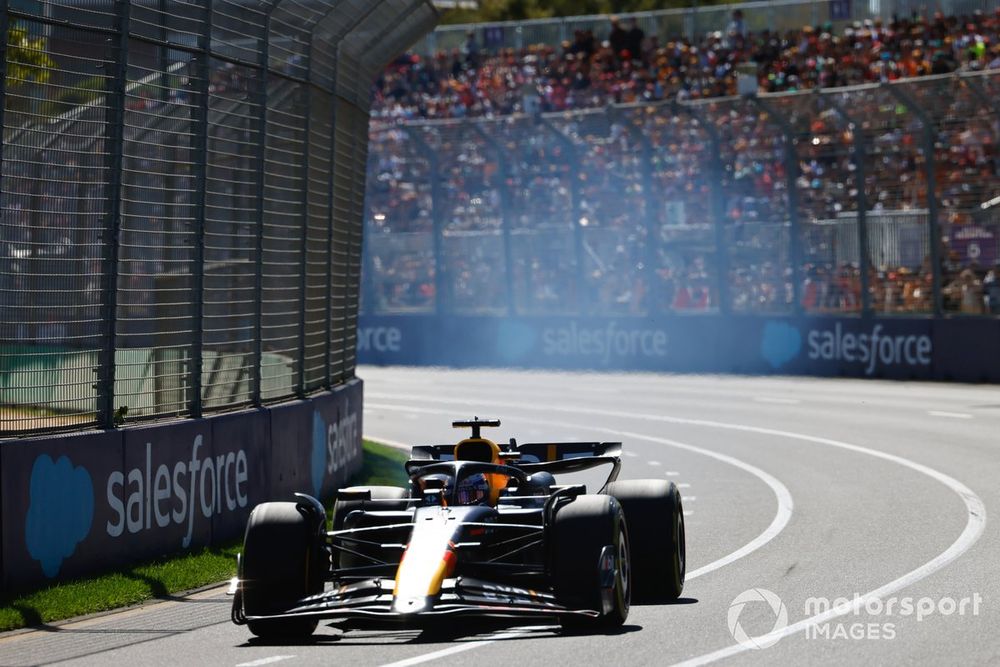The Australian Grand Prix saw an unexpected turn of events for Max Verstappen as he retired from the race due to a brake failure. Red Bull Racing initially hinted that the issue was more than just a simple mechanical failure, sparking speculation and theories within the Formula 1 community. As details emerge, it becomes evident that Verstappen’s brake failure was a result of a complex chain of events, involving both procedural mishaps and mechanical issues. In this article, we delve deeper into the circumstances surrounding Verstappen’s brake failure, exploring the possible causes and implications for Red Bull Racing.
Understanding the Incident: Verstappen’s retirement in Melbourne was attributed to his brakes overheating, causing the pad to jam onto the disc. While initial reports pointed towards a procedural error involving the tightening of a critical screw in the brake caliper, Red Bull Racing’s chief engineer, Paul Monaghan, suggests that the situation was more intricate than initially perceived. Monaghan reveals that the sequence of events leading to the brake failure may have originated from additional work required after Verstappen’s off in FP1. This suggests a combination of factors contributing to the failure, including procedural lapses and potential mechanical issues.
Analyzing the Chain of Events: The sequence of events leading to Verstappen’s brake failure highlights the complexity of Formula 1 engineering and the meticulous attention to detail required to prevent such incidents. Monaghan’s explanation sheds light on the importance of identifying and addressing potential issues early on, especially following unexpected incidents like Verstappen’s off in FP1. The involvement of multiple factors, including procedural changes and mechanical adjustments, underscores the intricacies involved in maintaining the reliability and performance of Formula 1 cars.
Implications for Red Bull Racing: Verstappen’s brake failure serves as a wake-up call for Red Bull Racing, prompting a reassessment of their procedures and protocols to prevent similar incidents in the future. Monaghan’s emphasis on interrupting the sequence of events leading to race retirements highlights the proactive approach taken by the team to mitigate risks and ensure reliability. Moving forward, Red Bull Racing will likely implement stricter quality control measures and enhanced monitoring systems to detect and address potential issues before they escalate into race-ending failures.
Lessons Learned and Future Preparations: The incident involving Verstappen’s brake failure offers valuable lessons for both Red Bull Racing and the broader Formula 1 community. It underscores the importance of continuous improvement and vigilance in maintaining the integrity of race cars, particularly in high-stakes environments like Grand Prix racing. By analyzing the root causes of the incident and implementing corrective measures, teams can enhance their resilience and competitiveness on the track. As Formula 1 continues to evolve, incidents like Verstappen’s brake failure serve as catalysts for innovation and improvement across the sport.
Max Verstappen’s brake failure at the Australian Grand Prix unveils the intricate dynamics at play in Formula 1 engineering and racing. While initial speculation pointed towards a procedural error, further analysis reveals a complex chain of events involving multiple factors. Red Bull Racing’s response to the incident underscores their commitment to proactive risk management and continuous improvement. As the season progresses, teams will draw upon the lessons learned from Verstappen’s brake failure to strengthen their performance and reliability on the track, ensuring a thrilling and competitive season for Formula 1 enthusiasts worldwide.
